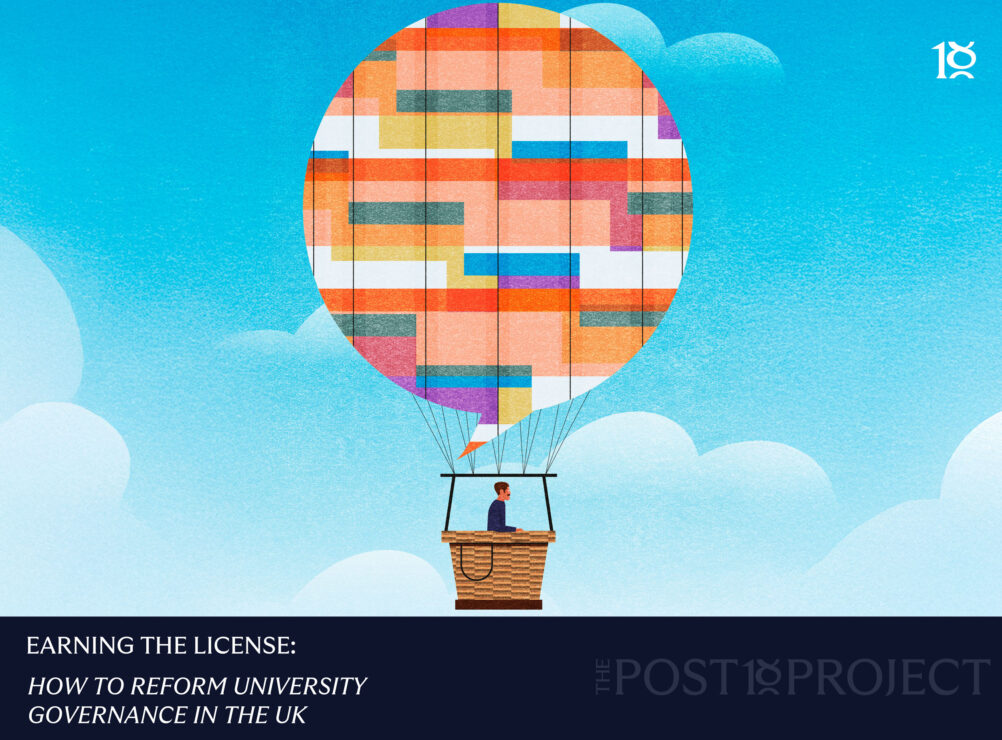COP26 has long since finished, and world leaders have returned to their home countries, full of promises for a brighter future.
However, it will be the younger generation that will most keenly feel the measure of their success or failure. So what can higher education institutions do to prepare students for that future?
The issue
The term “sustainability” is seen as confusing and ambiguous; indeed, recent work at Nottingham Trent University (NTU) found that while a small group of students and staff had a good understanding of the issues, the bulk of participants had variable knowledge of the area and tended to focus on environmental issues at the cost of social and economic ones.
These results are not unusual, but they do present a problem. The United Nations sustainable development goals (SDGs) and their related targets cover all aspects of human development against the backdrop of the natural world. Simple “sound bite” solutions will not suffice. To produce viable solutions to these problems we need to encourage interdisciplinary, multi-faceted understanding.
However, this is not easily done. Staff may be unable to see the relevance of sustainable behaviours to their subject area or simply don’t possess sufficient knowledge to incorporate ESD into their module content. So, given the already pressing demands on module time, it is clear that there are issues than must be addressed before sustainability can be reliably and consistently integrated into the teaching curriculum.
What can staff do?
In many cases, it may be that we are already teaching about sustainable behaviours but simply haven’t realised that our work was aligned to existing SDGs. In this case, familiarisation with the principles of sustainable behaviours and badging those elements so they are clearly highlighted to the students could be valuable.
If this is not possible, there are a range of activities that can be used to engage with the topic. Beginner activities would be relevant for students who have no pre-existing knowledge of sustainable behaviours and tend to be within discipline activities. These might include educational videos such as TED talks, talking about the course topic and how it relates to sustainability, or reviewing the SDGs.
Intermediate activities assume a working knowledge of the SDGs and focus on developing interdisciplinary understandings of the topic. Activities might include case studies, cost-benefits analyses to real or imagined scenarios, or problem-based learning. Finally, advanced activities would emphasise transdisciplinary interpretations of issues and can occur over longer periods of time.
Such exercises might include designing and implementing university projects, fields trips, or working with local government or agencies on long term solutions. Clearly, the more advanced activities would rely upon engagement with colleagues in other schools or outside the university – however, there are substantial benefits for doing so!
But you can’t address all of sustainability in one session. ESD also needs to be viewed from a course perspective, so that students are exposed to different perspectives and ideas throughout their time at university.
What can course teams do?
Course teams may wish to consider that many university level aspirations such as Athena Swan, decolonisation, and “success for all” can all be interpreted through the lens of the United Nation SDGs. For instance, whilst Athena Swan most obviously links with SDG 5 (Gender Equality), the relationships between gender and poverty (SDG 1), good health and well-being (SDG 3), Quality education (SDG 4), and Decent Work and Economic Growth (SDG 8) could all be explored to develop nuanced, holistic, and interdisciplinary understandings of the issues in hand.
This would allow several key performance indicators to be addressed at one time. The approach also has the advantage that topics can be spread throughout the course structure, reducing the workload on any one module and creating a network of opportunities to engage with the topic. And departments would benefit from having specialists who can help their colleagues develop their knowledge and comprehension of sustainability.
What can universities do?
Universities should look to develop networks both within and across schools, so that staff can help each other develop inter-disciplinary understanding of the issues in hand. However, gaining the appropriate knowledge to meaningfully integrate sustainability into teaching does take time – a precious resource that staff often feel they lack. The integration of sustainability into the curricula requires support from management in providing workload hours for staff to become familiar with the material.
Approaches like these might be disruptive to existing course structures and would require a commitment in both time and energy from staff and management. However, if we don’t meaningfully engage in ESD, we run the risk of sending our students out into the world completely unprepared for their future.














Perhaps we should be a little cautious about conflating sustainability with the SDGs? The latter are a very important and rightly influential attempt to frame the issues, probably the best thing we have to work with right now and certainly deserve to be studied in depth. But that doesn’t mean they are intellectually definitive or the last word on the subject. For example, you imply that people err in placing a greater weight on environmental issues than the SDGs do, but there is surely a legitimate question about whether it is the SDGs which place too little relative weight on… Read more »
Hi Mark – thanks for taking the time to reply, it’s appreciated. I take your point re. a possible conflation of sustainability with SDGs and you’re right, it’s a shorthand way of enabling ‘more’ thinking about the topic. I agree though – it’s understanding the relationships between the SDGs that creates better overall comprehension. I think some of the most interesting educational activities are those that challenge students to balance competing interests – i.e., as you mentioned, economics and environmental demands.
I think it depends on what ideas currently hold traction in the university. If there is a lot of traction already behind SDGs it makes sense to go with and build on that momentum. If other framings are more prominent – such as the climate emergency/ climate and biodiversity emergency then to go with those. No single framing is going to be perfect and is open to critique. I like the ‘scaffolding’ approach you outline above, where you progressively build in beginner and intermediate activities…